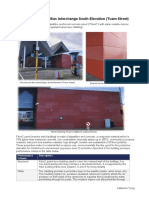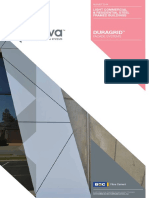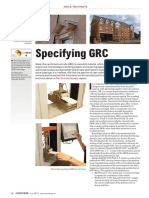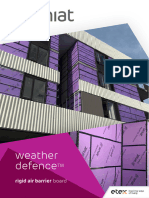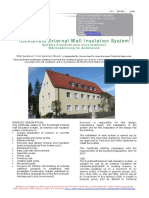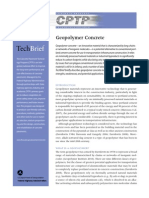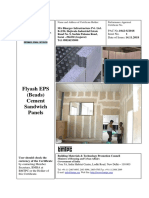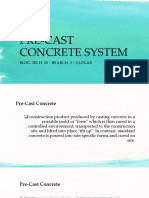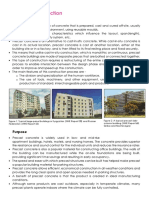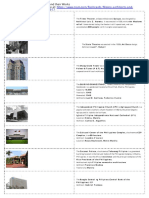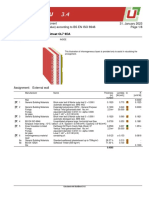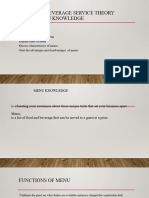0% found this document useful (0 votes)
113 views61 pagesPrecast Concrete Applications
Precast concrete and cast-in-place concrete are two common construction methods. Precast concrete involves forming and casting concrete elements off-site and transporting them for assembly. It is used for architectural panels, pipes, tunnels and more. Cast-in-place concrete involves pouring and working concrete on a construction site into forms to create structural elements like foundations, beams and floors. Both methods allow concrete to be formed into various architectural and structural building components.
Uploaded by
NeanderthalCopyright
© © All Rights Reserved
We take content rights seriously. If you suspect this is your content, claim it here.
Available Formats
Download as PDF, TXT or read online on Scribd
0% found this document useful (0 votes)
113 views61 pagesPrecast Concrete Applications
Precast concrete and cast-in-place concrete are two common construction methods. Precast concrete involves forming and casting concrete elements off-site and transporting them for assembly. It is used for architectural panels, pipes, tunnels and more. Cast-in-place concrete involves pouring and working concrete on a construction site into forms to create structural elements like foundations, beams and floors. Both methods allow concrete to be formed into various architectural and structural building components.
Uploaded by
NeanderthalCopyright
© © All Rights Reserved
We take content rights seriously. If you suspect this is your content, claim it here.
Available Formats
Download as PDF, TXT or read online on Scribd
/ 61

